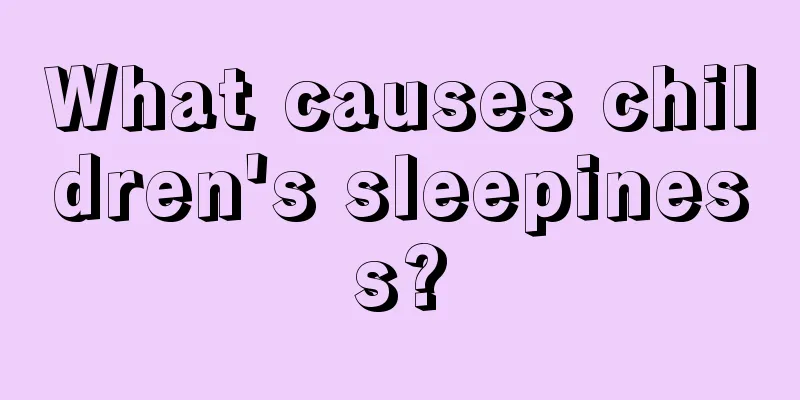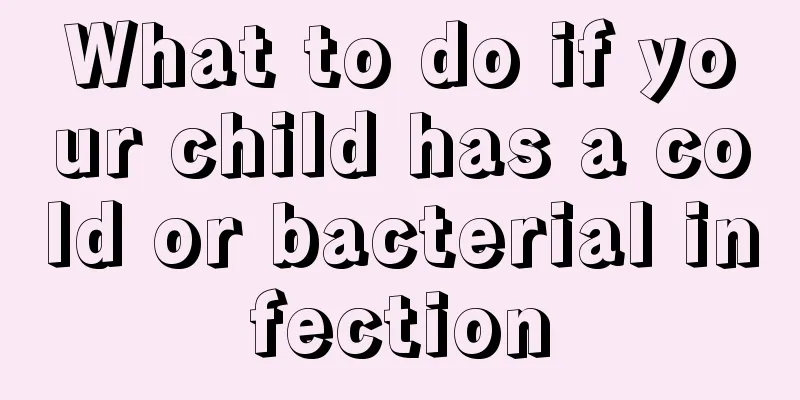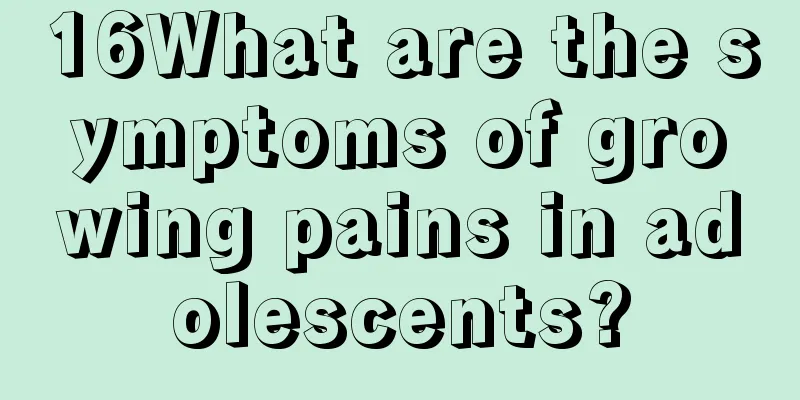What are the symptoms of infantile convulsions?

|
Infantile convulsions are not unfamiliar to many people. This disease is also called infantile convulsions clinically. This type of disease can cause great harm to children's bodies and may even be life-threatening in severe cases, so it must be taken seriously. Infantile convulsions are mainly caused by infection. The symptoms are very obvious and the treatment mainly focuses on using the right medicine for the right disease. So what are the specific symptoms of infantile convulsions? 1. Symptoms of convulsions Clinically, it can be summarized into eight signs. The so-called eight signs are twitching, shaking, trembling, pulling, reversing, pulling, running away and looking. The appearance of the eight signs indicates that convulsions are beginning to occur. However, when a convulsion occurs, not all eight symptoms will necessarily appear. Since the onset of convulsions can be acute or slow, and the symptoms can be either deficiency or excess, cold or heat, convulsions are often divided into acute convulsions and chronic convulsions in clinical practice. All diseases with an acute onset and belonging to Yang and excess are collectively called acute convulsions; all diseases with a slow onset and belonging to Yin and deficiency are collectively called slow convulsions. 2. Causes and symptoms This disease is called infantile convulsion in Western medicine. Among them, those accompanied by fever are mostly caused by infectious diseases. Common intracranial infectious diseases include meningitis, brain abscess, encephalitis, brain parasitic diseases, etc.; common extracranial infectious diseases include high fever convulsions and various serious infections (such as toxic bacillary dysentery, toxic pneumonia, sepsis, etc.). Those who are not accompanied by fever are mostly caused by non-infectious diseases. In addition to the common epilepsy, there are also water and electrolyte disorders, hypoglycemia, drug poisoning, food poisoning, genetic metabolic diseases, brain trauma, brain tumors, etc. In clinical practice, detailed medical history, careful physical examination, and corresponding laboratory tests are required to clarify the diagnosis and provide timely targeted treatment. 3. Pathology The six external evils can all cause convulsions. The main pathogens are wind evil, heat evil, damp heat and epidemic diseases. Children's skin is thin and their pores are not tight, so they are very easy to be affected by pathogenic factors. The pathogenic factors enter the body from the outside, causing high fever. The extreme heat turns into fire, and the excessive fire produces phlegm. In severe cases, the human body's blood is invaded and enters the pericardium, inducing liver wind, resulting in high fever, coma, convulsions, rashes, vomiting and nosebleeds, or the healthy qi cannot overcome the pathogenic qi, resulting in internal blockage and external loss. If due to improper diet, or accidentally ingesting contaminated and toxic food, the intestine and stomach will be blocked, phlegm and heat will be accumulated inside, and the blockage will not be eliminated, the Qi flow will be unfavorable, and the depression will turn into fire. Phlegm, fire, dampness and turbidity obscure the pericardium and induce liver wind, which can cause high fever, fainting, convulsions, vomiting, abdominal pain, and foul-smelling diarrhea. |
<<: Newborn baby with prickly heat on face
>>: What to do if your child wheezes when coughing
Recommend
What's wrong with the child's stomach gas?
Stomach gas is a very common phenomenon in daily ...
Treatment for night sweats in children
Children's physical health is one of the thin...
Is it okay for a baby to take a bath every day?
Nowadays, many families have only one child, so t...
What to do if your baby's throat is red and swollen
Every child will encounter some health problems i...
What is the recipe for eating pasta for a 1-year-old baby?
When the baby reaches a certain age, he can eat s...
Reasons why children's faces turn dark
Parents care for their children meticulously and ...
Baby's face has acne and pus
Children are generally not prone to acne before t...
What causes children to bite their teeth?
Many parents will find that their children have s...
What should I do if my child's face is red in patches?
Children's skin is relatively sensitive. If t...
Children don't know how to defecate
When children are young, their parents need to co...
Is rice noodles good for children?
When the baby is about 5 months old, many mothers...
Wash eyes of newborn baby with tea water
In our lives, there are many newborns who may onl...
What is the normal range of blood pressure for children?
Compared with adults, the blood pressure of young...
Why do children suffer from cerebellar atrophy?
If a child has cerebellar atrophy, parents who ha...
Causes of yellow hair in children
Generally speaking, in daily life, many children&...









